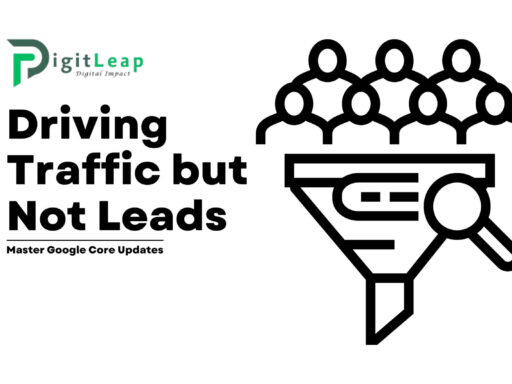Technical SEO Tips to Master Google Core Updates
Google core updates can feel like a mystery to many website owners, but they’re actually designed to improve the quality of search results by prioritizing sites that provide the best user experience. Core updates often bring changes to how Google ranks sites based on content quality, relevance, and technical performance. For this reason, technical SEO has become more critical than ever in helping your site withstand and even thrive during these updates.
Technical SEO encompasses the foundational practices that make your website more accessible, understandable, and valuable to both users and search engines. Here are key technical SEO tips to help you master Google core updates, maintain strong rankings, and keep your site competitive.
1. Prioritize Page Speed and Load Times
Page speed is a crucial factor in Google’s ranking algorithm and has only become more important with core updates. Slow websites frustrate users, leading to higher bounce rates, which in turn signals to Google that your site may not be providing a good user experience.
- Optimize Images: Compress and format images correctly (e.g., JPEG for photos, PNG for graphics with transparent backgrounds) and use next-gen formats like WebP for faster loading.
- Minimize JavaScript and CSS: Compress JavaScript and CSS files to reduce page load times. Tools like Google’s PageSpeed Insights can identify issues and suggest fixes.
- Use a Content Delivery Network (CDN): A CDN distributes your website’s data across multiple servers globally, reducing load times for users based on their geographic location.
2. Enhance Mobile Friendliness
With the rise of mobile-first indexing, Google primarily uses the mobile version of a website to determine its rankings. A mobile-friendly site ensures a seamless experience for users across all devices, which is a key factor in core updates.
- Responsive Design: Ensure your site automatically adjusts to fit any screen size, from desktops to smartphones. This improves usability and keeps visitors engaged.
- Test with Google’s Mobile-Friendly Tool: Google offers a Mobile-Friendly Test tool to check if your site meets mobile usability standards. This can highlight issues like small text, unclickable buttons, or content that doesn’t fit the screen.
- Optimize Touch Elements: Make sure buttons and links are easy to click on mobile, with enough spacing to avoid accidental taps.
3. Improve Core Web Vitals Scores
Core Web Vitals are three specific performance metrics that measure user experience: Largest Contentful Paint (LCP), First Input Delay (FID), and Cumulative Layout Shift (CLS). Google includes these metrics in its ranking criteria, so improving them is essential.
- Largest Contentful Paint (LCP): This measures loading performance. Aim for an LCP of 2.5 seconds or less by optimizing server response times, using efficient coding practices, and compressing images.
- First Input Delay (FID): This measures interactivity. A fast FID indicates that users can interact with your site without delays. Reduce FID by minimizing JavaScript and optimizing for user interaction.
- Cumulative Layout Shift (CLS): This measures visual stability, ensuring elements don’t move unexpectedly as the page loads. Avoid layout shifts by setting specific dimensions for images and ads and minimizing animations.
4. Optimize Your Site Architecture and Navigation
A well-organized website structure allows Google’s crawlers to navigate and index your pages more efficiently. This also improves user experience, which is a focus in core updates.
- Logical URL Structure: Use clean and organized URLs that are easy for both users and search engines to understand. A logical hierarchy (e.g., site.com/category/page) improves navigation.
- Breadcrumb Navigation: Breadcrumbs provide a clear path for users and search engines to follow, helping both to understand the site’s structure.
- Internal Linking: Use internal links to connect related content, guiding users through your site and helping Google understand the relationship between pages. It also spreads link equity to important pages.
5. Focus on Structured Data and Schema Markup
Structured data, or schema markup, provides additional context to search engines about the content on your page. Schema can improve your website’s search presence with enhanced results, known as “rich snippets,” which often appear at the top of search results.
- Implement Schema for Key Pages: Use schema markup for products, events, reviews, articles, and other important content types. Schema.org offers various types of markup, and Google’s Structured Data Testing Tool can help verify your implementation.
- Enhance Search Features: Schema markup can enable rich snippets, which often result in higher click-through rates by providing extra information in the search results, such as star ratings, FAQs, and product availability.
- Keep Your Schema Updated: Ensure your schema markup stays accurate and relevant to the content on your pages. This avoids confusion for both users and search engines, especially as Google’s algorithm evolves.
6. Conduct Regular Site Audits
A comprehensive SEO audit helps uncover technical issues that could impact your rankings. Regular audits are essential for staying ahead of potential problems and aligning with Google’s expectations.
- Use SEO Tools: Tools like SEMrush, Ahrefs, and Screaming Frog can analyze your site and highlight issues, including broken links, duplicate content, and missing meta descriptions.
- Check for Crawl Errors: Use Google Search Console to monitor crawl errors. These errors prevent Google’s bots from accessing certain pages, which can negatively affect indexing.
- Monitor Indexing Status: Make sure that important pages are indexed. Pages that aren’t indexed don’t appear in search results, meaning any potential traffic is lost.
7. Enhance Your Content Quality and Relevance
Google’s core updates place significant emphasis on content quality and relevance. It’s no longer enough to have keyword-stuffed content; Google wants material that genuinely meets users’ needs and answers their questions.
- Content Depth and Accuracy: Make sure your content provides in-depth, accurate information. Google rewards content that addresses users’ queries thoroughly and offers real value.
- Regular Content Updates: Fresh, updated content is more appealing to users and search engines alike. Review and refresh older articles with new insights, data, and links.
- Optimize for User Intent: Understand what users are looking for with specific keywords and make sure your content matches this intent. Google is focused on delivering the most relevant results, so aligning your content with user expectations boosts your chances of ranking well.
8. Secure Your Site with HTTPS
Google considers HTTPS a ranking factor, as it prioritizes user security. A secure website not only improves rankings but also builds trust with your audience.
- Install an SSL Certificate: SSL (Secure Socket Layer) encrypts the data exchanged between your site and its visitors, ensuring security. If your website URL starts with “HTTP” rather than “HTTPS,” it’s time to upgrade.
- Fix Mixed Content Issues: Mixed content occurs when secure (HTTPS) and non-secure (HTTP) resources are loaded on the same page. Mixed content warnings can deter visitors, so ensure all links, images, and scripts are secure.
- Display Security Badges: Letting visitors know your site is secure with trust badges can increase confidence, which is especially important for e-commerce sites handling sensitive information.
9. Minimize and Manage Redirects
Excessive redirects can slow down your website and confuse users. Google sees too many redirects as a sign of a poorly managed site structure, which can impact rankings.
- Limit Chain Redirects: A chain occurs when one redirect leads to another and another. Each additional redirect adds load time, so it’s best to have a single, direct redirect.
- Use 301 Redirects for Moved Pages: If a page is permanently moved, use a 301 redirect to tell Google. This maintains SEO value from the original URL and provides users with a smooth transition.
- Audit and Update Redirects: Regularly review your redirects to ensure they’re still relevant and necessary. Remove any outdated or unnecessary ones to keep your site clean and efficient.
10. Optimize for Local SEO (if Applicable)
If your business serves a specific geographic area, focusing on local SEO is crucial for ranking in localized searches. Google’s core updates also emphasize relevance, so showing up for local searches boosts your visibility among potential customers nearby.
- Claim and Optimize Google Business Profile: Ensure your Google Business Profile is accurate and up to date with your business address, phone number, operating hours, and other relevant details.
- Include Location-Based Keywords: Use location-specific keywords in your content, meta descriptions, and titles to help local customers find you.
- Encourage Positive Reviews: Reviews not only build trust with potential customers but also help your ranking in local search results. Ask satisfied customers to leave a review on Google and other relevant platforms.
Conclusion
Mastering Google core updates doesn’t require drastic changes but rather a commitment to high-quality content, excellent user experience, and sound technical SEO practices. Each core update brings new nuances to how Google evaluates websites, so staying adaptable and proactive is essential. By optimizing for speed, mobile usability, structured data, and security, you’ll ensure your site is ready to handle whatever changes come with each update.
At Digit Leap, we understand the complexity of keeping up with Google’s core updates. We specialize in helping businesses like yours build a strong technical foundation that withstands algorithm changes and keeps you competitive. Let’s work together to secure your rankings and drive sustainable growth through smart, strategic SEO.
FAQs
Q1. How often does Google release core updates?
Google releases core updates several times a year. Each update may affect rankings differently, so staying informed and adapting to changes is crucial.
Q2. What is Core Web Vitals, and why is it important?
Core Web Vitals are a set of metrics related to user experience, including page load time, interactivity, and visual stability. Optimizing these factors helps improve your ranking potential.
Q3. How can I check if my site is affected by a core update?
Monitor your site’s performance in Google Search Console and your traffic analytics. A significant drop in traffic might indicate an impact from a core update.
Q4. Can I recover lost rankings after a Google core update?
Yes, recovery is possible with adjustments. Focus on technical SEO, content quality, and improving user experience to regain rankings.
Q5. Is HTTPS still necessary if I don’t handle sensitive information?
Yes, HTTPS is recommended for all websites as it enhances security and is a ranking factor in Google’s algorithm. It builds trust and improves user experience.






